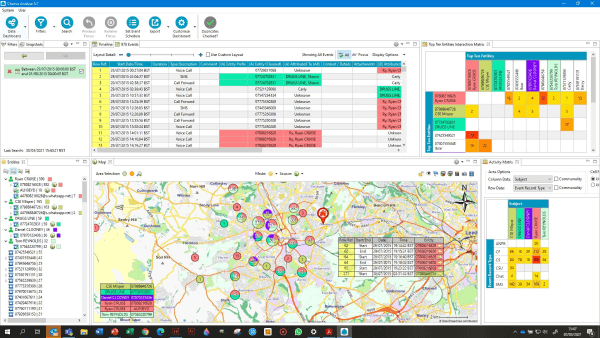We recently conducted some training on the topic of being confident in court when preparing and presenting evidence. It turned out to be one of the biggest events we have ever held at Chorus with over 650 people registered. It is a daunting experience and a topic that perhaps requires more formal training for those that must present digital evidence.
As an aid from the session, we asked our presenter and Customer Success Manager, Dan Watson, for his top 10 tips, so here they are.
1. Be brave. Own the job.
This relates to the entire process of your investigation from when you take your initial allocation through to court disposal. As an Analyst your role is to inform the decision-making process of the Investigators. You need to look objectively at the data and information. Use the ‘5wh’ questions to get into the data and know the job inside out. Do not be afraid to be proactive and test theories and hypotheses to assist with a well-rounded investigation.
2. Build evidence from day 1.
As soon as you identify an evidential source, task it out to ensure it is obtained. If you cannot provenance links to numbers or vehicles etc then you cannot evidentially attribute it. Leaving attribution to the end adds unnecessary pressure to your case at a point where you can do without it.

3. Engage with CPS and Counsel.
Get involved with the CPS and your allocated barrister at the earliest opportunity. Be proactive and demonstrate that you want to be involved. This enables your voice and opinion to be heard and provides you with an understanding of how the barrister wants evidence presented which will help reduce stress and anxiety.
4. Prioritise evidence submission – Post Charging (Full submission/ Disclosure).
At this point you will be under pressure to produce things quickly. It is important to negotiate priorities into realistic deadlines. When creating evidential product, it is also important to get help and make sure everything is peer reviewed for sanity checks and to reduce errors which can undermine your submission.
5. Use version control.
Being organised is half the battle. For each submission update your exhibits log and create folders and sub-folders for products and exhibits so they are easily accessed by colleagues. Use tight version control so everyone can see the progress and easily identify the latest version.
6. Confident attribution.
Use a checklist to run through all the possible ways to attribute devices and other entities to the subjects of your investigation. Make sure the attribution is yours and that you are confident with it. If you are not, then raise it with your superior to avoid issues in court.
7. Use Chorus reports for quick attribution wins and to save time preparing schedules and maps.
All the data is cleansed to an evidential standard and the reports are a great way to identify who is calling who, the frequency of contact, and any potential meetings that may assist you attribute a phone number or device. Customise your events schedule comments and headers and do the same with your mapping labels. Keep maps simple and use images and maps where appropriate to add clarity.

8. Cut the jargon.
This is not line of duty, keep the acronyms to a minimum. You are presenting to a jury of ordinary people so keep the language simple. They will have to evaluate what you have provided without any extra input or explanation from you, and they need to understand what they are looking at. MSISDN? No, it is a phone number please.
9. Fact and opinion. Know the difference.
We can answer fact. But you cannot give opinion. You can only comment on evidence that you are the originator of. Remember R/IPA: can you justify obtaining the data? Is the period of data you request (whether directly or indirectly), proportionate to the events you are investigating? Can you show that it was necessary to obtain it? You can also be asked about software and how it works, Chorus do provide a statement to assist with this. Opinions on things such as the coverage of a cell outside the findings of an RFPS, the interpretation of retrieved messages or CCTV should not be given. It might well be in your schedule, but it is not your evidence. You cannot be asked about decision making of senior officers either.
10. Do a ‘recce’ of the court.
Go and check out the court before you are formally due in. Familiarise yourself with your journey and figure out where you are going to park. Does the court have a secure wifi connection? Is there somewhere close by where you able to get something to eat and drink? All these things will help relax you when the day comes.
There are many more things that we can recommend to help you be confident in court but this should serve as a good start. If you are a Chorus customer and you would like to know more, especially around how using Chorus can help then please get in contact with Dan.


